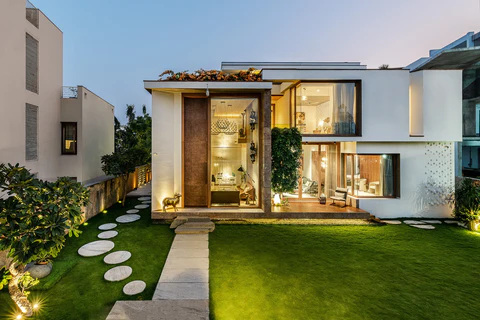
March 7, 2025
Maximizing the potential of eco-friendly living spaces goes beyond just making environmentally conscious choices—it’s about creating a home that’s comfortable, efficient, and sustainable. Here are some effective ways to get the most out of your eco-friendly living environment:
-
Harness Natural Light
One of the simplest ways to reduce energy consumption is by taking advantage of natural light. Install larger windows, skylights, or glass doors to allow sunlight into your home, reducing the need for artificial lighting. This not only lowers electricity usage but also creates a warm, inviting atmosphere. -
Invest in Energy-Efficient Appliances
Switch to energy-efficient appliances, such as Energy Star-rated refrigerators, washing machines, and water heaters. These appliances consume less power, helping to reduce your electricity bills and environmental impact. Additionally, smart thermostats and lighting systems allow you to control energy use and further optimize efficiency. -
Use Sustainable Building Materials
When designing or renovating your space, choose sustainable materials like bamboo, reclaimed wood, or recycled metal and glass. These materials have a lower environmental impact compared to traditional building materials and often offer durability and unique aesthetic appeal. -
Implement Water Conservation Practices
Water conservation is essential in eco-friendly living. Install low-flow faucets, showerheads, and toilets to reduce water usage. Consider adding a rainwater harvesting system to collect rainwater for garden irrigation or non-potable uses. Opt for drought-resistant landscaping to reduce the need for frequent watering. -
Integrate Renewable Energy
Consider adding solar panels or other renewable energy sources to your eco-friendly home. Solar power is a great way to reduce reliance on traditional energy grids and lower your utility bills. You might even be able to sell excess energy back to the grid, creating additional savings. -
Create a Waste-Free Environment
Reduce your waste by adopting practices like composting organic waste and recycling paper, plastic, and glass. Avoid single-use plastics and choose reusable alternatives, such as glass containers, stainless steel straws, and cloth bags. Install a dedicated recycling and composting station to make waste separation easier. -
Introduce Greenery Indoors
Houseplants not only enhance the aesthetic appeal of your home but also improve indoor air quality by removing toxins and increasing oxygen levels. Consider low-maintenance plants like succulents or vertical gardens to bring nature indoors while also promoting a healthier living space. -
Optimize Heating and Cooling
Invest in energy-efficient insulation, windows, and doors to ensure your home stays cool in the summer and warm in the winter without relying heavily on heating and cooling systems. Adding ceiling fans or using natural ventilation also helps in regulating temperature, reducing energy consumption. -
Smart Home Integration
Embrace smart home technology to further enhance energy savings and sustainability. Automated systems for lighting, heating, and cooling can adjust based on your habits, reducing unnecessary energy usage. Smart meters can help track energy consumption and optimize usage patterns. -
Eco-Friendly Furniture and Décor
Choose furniture made from sustainable materials such as reclaimed wood, bamboo, or recycled fabrics. Look for eco-friendly finishes and paints that are low in volatile organic compounds (VOCs), which are harmful to the environment and human health.
By implementing these strategies, you can make the most of your eco-friendly living space, ensuring that your home is not only stylish and comfortable but also responsible and sustainable. Whether you’re constructing a new house or optimizing your current living environment, every small change can contribute to a greener, healthier future.